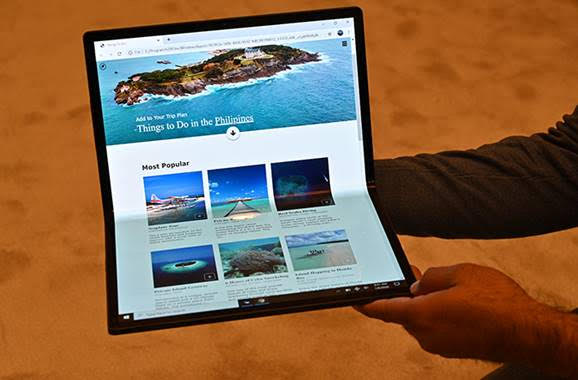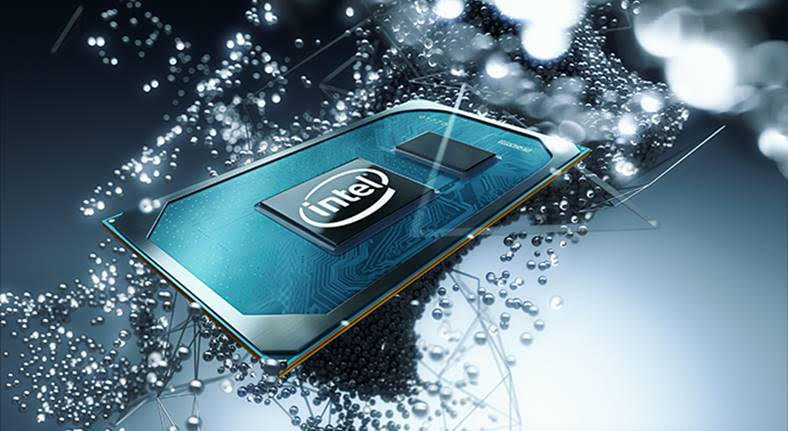Singapore, 7 January 2020 – Breakthroughs in artificial intelligence (AI) that pave the way for autonomous driving. A new era of mobile computing innovation. The future of immersive sports and entertainment. Intel demonstrated all of these and more today at CES 2020, showcasing how the company is infusing intelligence across the cloud, network, edge and PC, and driving positive impact for people, business and society.
Intel CEO Bob Swan kicked off today’s news conference by sharing updates from its Mobileye business, including a demonstration of its self-driving robocar navigating traffic in a natural manner. The drive demonstrated Mobileye’s unique and innovative approach to deliver safer mobility for all with a combination of artificial intelligence, computer vision, the regulatory science model of RSS and true redundancy through independent sensing systems.
Swan also highlighted Intel’s work with the American Red Cross and its Missing Maps project to improve disaster preparedness. Using integrated AI acceleration on 2nd Generation Intel® Xeon® Scalable processors, Intel is helping the American Red Cross and its Missing Maps project to build highly accurate maps with bridges and roads for remote regions of the world, which helps emergency responders in the event of a disaster.
“At Intel, our ambition is to help customers make the most of technology inflections like AI, 5G and the intelligent edge so that together we can enrich lives and shape the world for decades to come. As we highlighted today, our drive to infuse intelligence into every aspect of computing can have positive impact at unprecedented scale,” Swan said.
Intelligence-Driven Mobile Computing

At CES 2020 in Las Vegas, Intel previewed a foldable OLED display form factor, code-named “Horseshoe Bend.” Based on Intel’s upcoming Tiger Lake mobile processors, the design is similar in size to a 12-inch laptop with a folding touchscreen display that can be opened up to more than 17 inches. (Credit: Walden Kirsch/Intel Corporation)
Mobile computing was an area of emphasis, as Intel made announcements spanning new products, partnerships and exciting platform-level innovations that will transform the way people focus, create and engage. Intel Executive Vice President Gregory Bryant announced the following:
- First look and demonstration of the newest Intel® Core™ mobile processors, code-named “Tiger Lake”: Tiger Lake is designed to bring Intel’s bold, people-led vision for mobile computing to life, with groundbreaking advances in every vector and experience that matters. With optimizations spanning the CPU, AI accelerators and discrete-level integrated graphics based on the new Intel Xe graphics architecture, Tiger Lake will deliver double-digit performance gains1, massive AI performance improvements, a huge leap in graphics performance and 4x the throughput of USB 3 with the new integrated Thunderbolt 4. Built on Intel’s 10nm+ process, the first Tiger Lake systems are expected to ship this year.
- Preview of first Xe-based discrete GPU: Intel Vice President of Architecture for Graphics and Software Lisa Pearce provided insight into the progress on the new Intel Xe graphics architecture, which will provide huge performance gains in Tiger Lake, and previewed Intel’s first Xe-based discrete GPU, code-named “DG1.”
- Significant updates on Intel’s “Project Athena” innovation program, including the first Project Athena-verified Chromebooks: Project Athena-verified designs have been tuned, tested and verified to deliver fantastic system-level innovation and benefits spanning battery life, consistent responsiveness, instant wake, application compatibility and more. Intel has verified 25 Project Athena designs to date, and Bryant announced an expanded partnership with Google that has already resulted in the first two Project Athena-verified Chromebooks, the ASUS Chromebook Flip (C436) and the Samsung Galaxy Chromebook. Intel expects to verify approximately 50 more designs across Windows and Chrome this year and deliver a target specification for dual-screen PCs.
- Form factor innovation, including dual screens and a revolutionary foldable design: Through deepened co-engineering efforts with OEM partners, Intel helps deliver category-defining devices based on Intel Core processors. This includes new dual-screen and foldable designs like the Lenovo ThinkPad X1 Fold, which leverages the Intel Core processor with Intel Hybrid Technology (code-named “Lakefield”) expected to ship midyear, and the Dell Concept Duet. Bryant also previewed Intel’s latest concept device, a foldable OLED display form factor, code-named “Horseshoe Bend.” Based on Intel’s upcoming Tiger Lake mobile processors, the design is similar in size to a 12-inch laptop with a folding touchscreen display that can be opened up to more than 17 inches.
Intelligence-Driven Business Transformation
The data center is the force that delivers intelligence to businesses around the world and Intel Xeon Scalable processors continue to be the foundation of the data center. Intel Executive Vice President Navin Shenoy announced that 3rd Generation Intel Xeon Scalable processors, coming in the first half of 2020, will include new Intel® DL Boost extensions for built-in AI training acceleration, providing up to a 60% increase in training performance over the previous family.
Shenoy highlighted several ways Intel is threading intelligence into data platforms across cloud, network and edge and how this is transforming sports and entertainment:
- Netflix optimizes and accelerates media streaming services: Netflix has utilized the latest video compression technology, AV1, to enhance Netflix’s media streaming services and bring content to life across the globe, with up to 60% compression efficiency over the previous compression technology (AVC). Intel’s and Netflix’s joint efforts continue with the development of an open-source high-performance encoder (SVT-AV1), optimized on 2nd Gen Intel Xeon Scalable processors, that delivers significant quality and performance gains making it viable for commercial deployment.
- Enhanced athlete and viewer experiences at Tokyo 2020 with 3D Athlete Tracking: A first-of-its-kind computer vision solution, 3D Athlete Tracking (3DAT) uses AI to enhance the viewing experience with near real-time insights and visualizations. 3DAT uses highly mobile cameras to capture the form and motion of athletes, then applies algorithms optimized with Intel DL Boost and powered by Intel Xeon Scalable processors to analyze the biomechanics of athletes’ movements. Shenoy announced that this technology will enhance replays of the 100-meter and other sprinting events at the Olympic Games Tokyo 2020.
- Large-scale volumetric video streaming: Intel and the sports industry are transforming the sports viewing experience with volumetric video, an important progression toward enabling sports viewing without limitations. Intel® True View synthesizes the entire volume of the stadiums’ field to provide endless angles that allow fans to choose any vantage point and player perspective and stream from their devices. Intel and the NFL showcased the power of streaming volumetric video with a play from Week 15’s Cleveland Browns-Arizona Cardinals game. The data produced from the first quarter of an NFL game alone reaches beyond 3TB per minute – an exponential increase requiring tremendous computing power.





